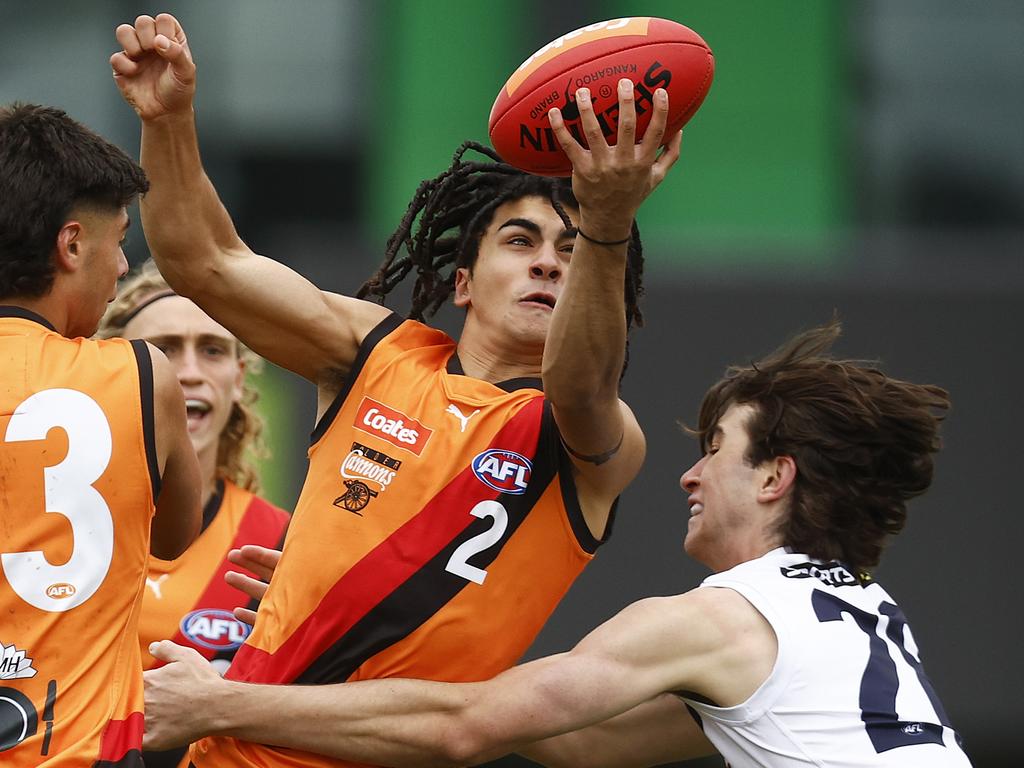AFL trades 2024: Essendon’s trading strategy explained
Essendon just gave up a top-10 draft pick for a host of late and future selections. What are the Bombers up to – and how does a teenage goalsneak fit into their plans? Find out here.
Essendon just sent away a top-10 pick in what is dubbed a super draft for a handful of back-end choices and a future pick from Melbourne, which is fully planning to play finals next year.
On the surface that looks like a dud move, but this is the world of matching for academy players in the draft.
So, why did the Bombers give a rival a second swing in the first nine choices?
The simple answer is Isaac Kako.
The less simple answer is the draft points index.
Essendon is keen to draft academy small forward Kako, filling a long-held need for a goalsneak who applies strong pressure.
The Bombers did have pick 9 and could have used it on Kako, but that is bad business.
The smarter move was sending that pick away for back-end choices, and a future first rounder.
The Demons could finish top-four or bottom-four next year – nobody really knows – but either way the Bombers will have an extra choice in the first round next year and still get Kako.

How will they get Kako?
Essendon was fearful a rival would bid on the livewire within the top 10 picks on draft night, which would force the Dons on a scramble to match draft points.
The haul the Bombers landed in the Demons trade, outside of next year’s choice – picks 28, 40, 46, 54 and 65 – is equal to 1747 draft points.
The Bombers already held pick 31, which remains in list manager Matt Rosa’s arsenal.
Every draft pick equates to a certain amount of points, starting at 3000 for pick No.1.
So, for example, if a club bid on Kako at pick 8, that would equal 1551 points.
An academy player warrants a 20 per cent discount on matching points, so the Dons would have to stump up draft picks worth 1241 points to match the bid and recruit Kako.
Of Essendon’s new hand, that would result in handing over picks 28 and 31, which equates to 1335 points. In that case, the Bombers will basically lose 28, and 31 will slide back in the order. It could become 64 or 65.
Essendon held only picks 9 and 31 before the trade with Melbourne, and an early bid for Kako would have meant losing pick 9 (worth 1469 points). Now the Bombers will have a collection of picks later in the draft to restock their list.
Or the Dons can become big traders before or on draft night, using either of their future first-round picks (tied to Essendon and Melbourne) and their stock of later choices to move up the order.
If you’re keeping up, in the scenario outlined above, the Bombers would swap pick 9 for a future first while still drafting Kako at No.7 and adding a few extra selections later in the draft.
That is smart business.
Brisbane did similar work in trading pick 20 to Richmond last week to get more back-end points to match bids on Levi Ashcroft and Sam Marshall.
And Gold Coast has had its 13th pick on the table all trade period to set up for a bid on academy jet Leo Lombard.
Those situations open the door for rivals – like Melbourne in the Essendon case – to pounce and move up the order, in what was a clever play by the Demons to now draft two top-10 prospects.
Now you have your head wrapped around the system, get ready to do it again, because in 2025 the AFL will tweak the bid-matching process and the draft value index.
More Coverage
Originally published as AFL trades 2024: Essendon’s trading strategy explained





